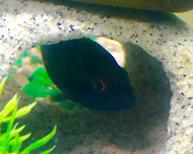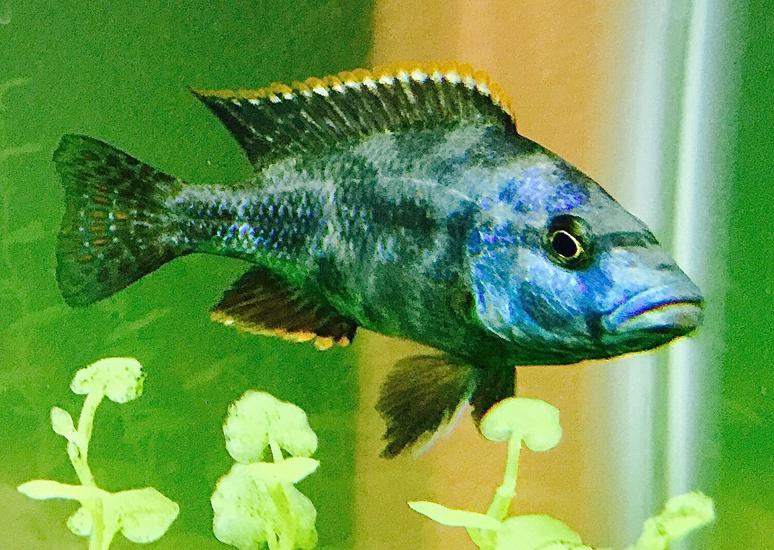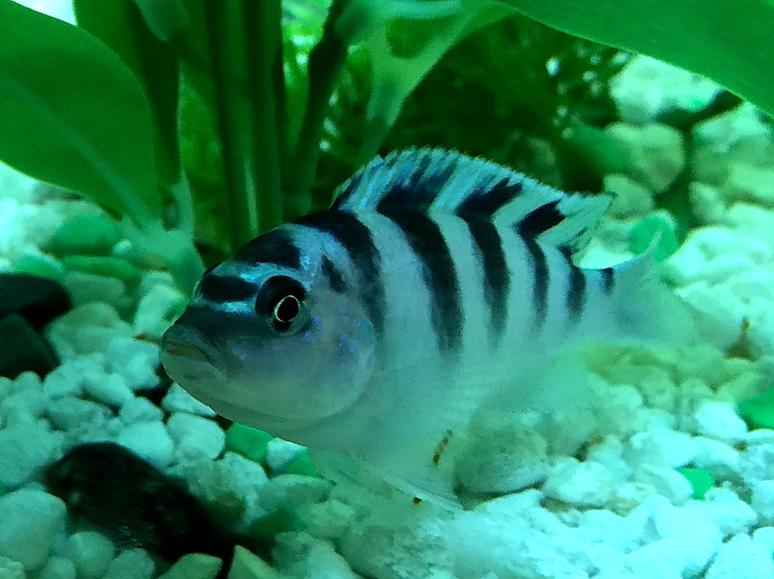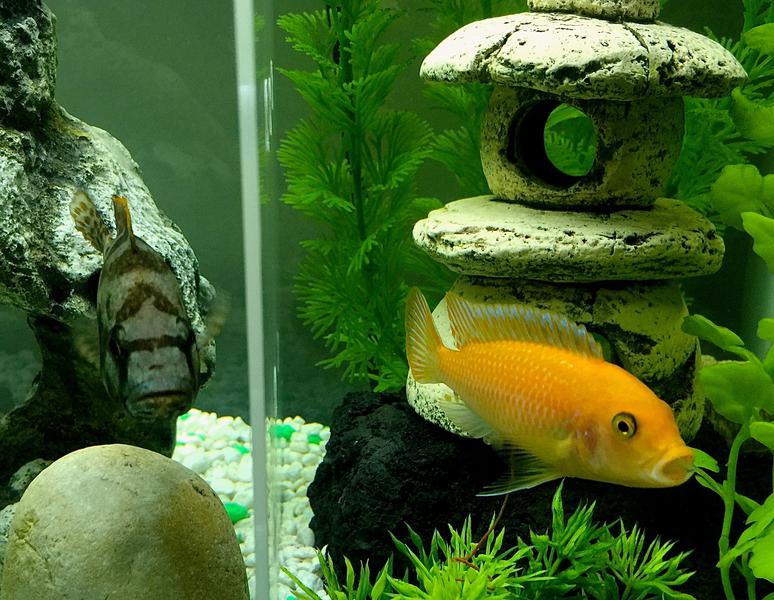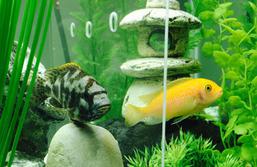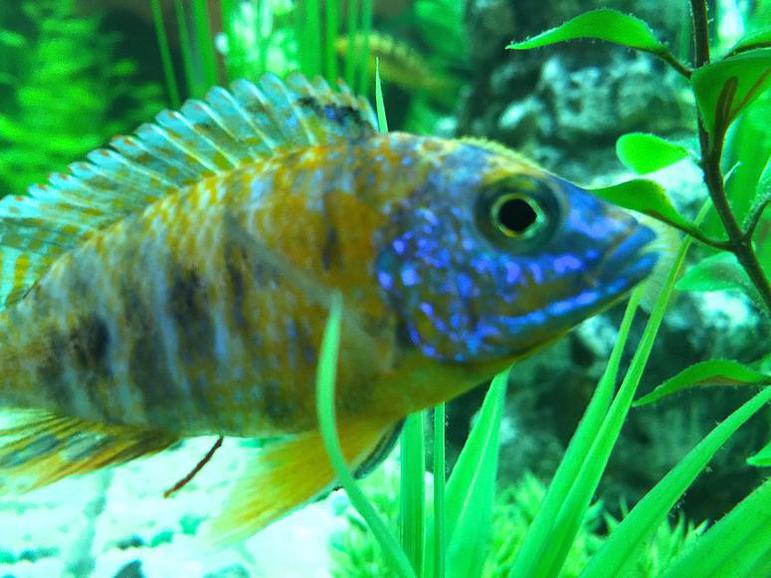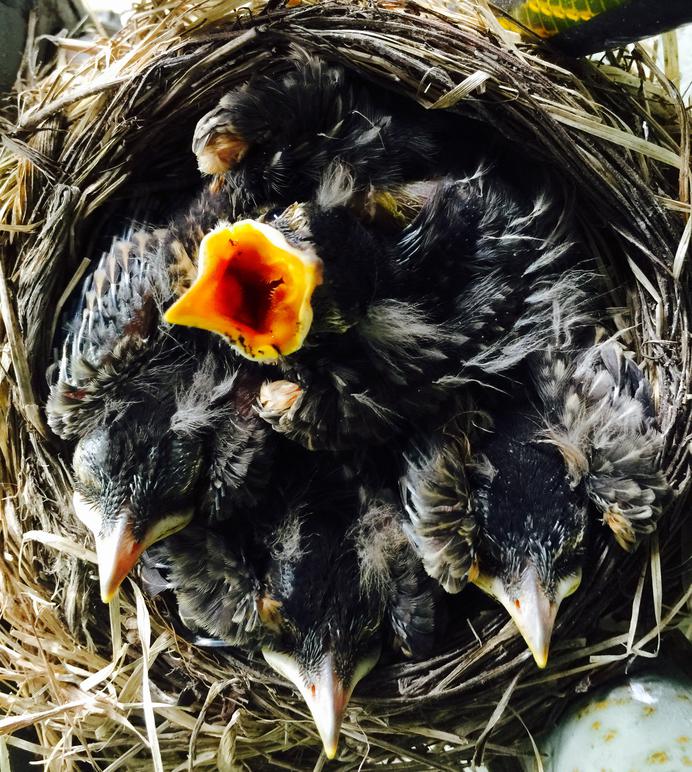 | ||||
African Cichlid Main Page
Behavior & Aquarium Care
Doing animal behavior observations is a fun, hands-on introduction to biology. This page features the African Cichlid behavior in our 29-gallon tank (Yes, we know the tank is too small), and includes photos, videos, information on cichlid care and student resources.
African Cichlid Behavior & Aquarium Care
SPO VIRTUAL CLASSROOMS
 | ||||||
In August of 2015 we set up our first sizable aquarium and stocked it with African Cichlids. These colorful freshwater fish are very smart and behaviorally complex. In a cichlid tank, there is never a dull moment.
Our FREE African Cichlid resources include:
- photos and descriptions of each of our fish species
- printable Displacement Behavior Sheet for determining dominance hierarchy of cichlids
Meet Our African Cichlids!
DARWIN
Red Zebra Cichlid
(Maylandia estherae)
Max Size ~ 6 inches
Red Zebras have a reputation for being moderately aggressive. Darwin is quite aggressive, and, although not the largest, was the top ranking fish in the tank until Mojo turned blue. Now that Mojo is separated from the rest of the fish, Darwin is #1 again. He frequently patrols the tank, guarding his favorite locations and displacing other fish. Darwin also likes to redecorate, moving pebbles around the tank with his mouth to create his own special "patch". This fish is probably a male and is currently ~ 3 inches long.
More Resources on Keeping African Cichlids
- CichlidAdvice.com: A Complete Beginners Guide
- African Cichlids from Animal World
- African Cichlid Aquarium Profile, Drs. Foster & Smith
- Cichlid Forum: Forums are a great way to connect with other Cichlid hobbyists, and find answers to common, and uncommon cichlid problems.
- African Cichlid Hub, another good forum, and there are several others, as well. Just Google "African Cichlid Forum".
- JM Tropicals YouTube Channel has many video resources on keeping cichlids and other tropical fish.
TANK DRAMA LEVEL
TDL-3
(physical aggression)
1/18/2016
Eric, our Acei Cichlid, is now being housed in a 5-gallon hospital tank. He was being physically attacked and mercilessly chased by other cichlids (Mojo and possibly Darwin) and developed frayed fins and a lesion on his side.
He is being treated with Tetracycline antibiotics, a teaspoon of non-iodized salt and some much needed alone time.
MOJO JOJO
Livingston Cichlid
(Nimbochromis livingstonii)
Max Size ~ 10 inches
Livingstons have a reputation for being very aggressive. They also have fascinating feeding behavior. In the wild, Livingstons are ambush predators that play dead in the substrate until small fish approach for a nibble.
Until recently, Mojo was a mid-ranking, unaggressive juvenile (see inset photo) that was very food motivated. So he quickly grew to be the largest fish in the tank (~4 inches). In December 2015 Mojo developed his "big boy" blue coloration.
He is now the alpha fish in the tank and is very physically aggressive (chasing, biting and open mouth fighting). Due to his high level of aggression, Mojo is currently sectioned off in a separate area of the tank.
Although Mojo is one of my favorite fish, in retrospect, a Livingston was a poor choice for our small tank, and we are looking into options for housing him properly.
Photo Below: Plexiglass panel with dime-sized drilled holes separates Mojo and Darwin.
GUMBALL
Kenyi Cichlid
(Maylandia lombardoi)
Max Size ~ 5 inches
Red Zebras have a reputation for being moderately aggressive. Gumball, although the third-ranking fish in the tank, is not very aggressive and prefers to stay hidden and out of the way. Gumball is looking like a female (blue with black stripes; males are usually orange), but may not be sexually mature enough to determine sex. Currently ~ 3 inches long.
ERIC
Acei Cichlid
(Pseudotropheus acei)
Max Size ~ 6 inches
Acei have a reputation for being only mildly aggressive. Eric (named after the Monty Python skid "Fish License"), is large, but rarely aggressive, and was the 4th ranking fish in the tank, until he began being targeted and injured by Mojo and Darwin. In January 2016, he was moved to a 5 gallon hospital tank to be treated and given a place to recover. We do not know whether Eric is actually a male or female, since Acai are not sexually dimorphic (meaning the sexes look the same. Currently ~ 4 inches long.
* Note: Eric is generally non-aggressive, but did start antagonizing Mojo as soon as Mojo was separated from the other fish. Eric would swim up to the barrier to hang out and fan out his fins.
* We will try to post a better pic of Eric soon. Especially now that he is sick, and has gone through the trauma of being picked on by fish and transferred to a new tank, he is especially shy and difficult to photograph.
AL CAPONE
Bumblebee Cichlid
(Pseudotropheus crabro)
Max Size ~ 6 inches
Bumblebees have a reputation for being very aggressive. Al was the smallest fish when we first purchased out cichlids. So he grew quickly, and is now moderated sized (not the biggest or the smallest in tank). He is currently the 5th ranking fish, only dominant over Charlotte. It remains to be seen what his aggression level will be once he reaches sexual maturity. Although we refer to Al as "he", we are unsure of Al's sex, since male and females can look identical. Currently ~ 3 inches long.
CHARLOTTE
Peacock Cichlid
(Aulonocara)
Max Size ~ 7 inches
Peacocks are known to be relatively unaggressive. So we were surprised
when we first introduced the cichlids to our tank, and Charlotte chased everyone.
She was in the #1 position ... for about a day. Then Darwin took over, became top fish and Charlotte descended to near the bottom of the hierarchy, just above Al. Charlotte is probably a male fish, being so brightly colored. This is a species of cichlid that is sexually dimorphic (sexes look different, males brighter and larger). Currently ~ 3 inches long.
Livingson (spotted) and Red Zebra (orange) cichlids separated by plexiglass divider. Note Zebra's open mouth threat display. These guys don't care for each other.
Page last updated 9/2017
 | ||||
Young children are natural born scientists, full of curiosity! Join the at-home experiments and explorations of a scientist mom & her kids.
 | ||||||
SPO is a FREE science education website. Donations are key in helping us provide this resource with fewer ads.
Please help!
(This donation link uses PayPal on a secure connection.)
Betty's Chicks
10 Days Old
This spring we're tracking two robin nests on our property. Take a peek at our photos of the chicks as they grow!
You have FREE access to a large collection of materials used in a college-level introductory biology course. The Virtual Biology Classroom provides a wide range of free educational resources including PowerPoint Lectures, Study Guides, Review Questions & Practice Test Questions.
African Cichlid Dominance Behavior & Feeding: VIDEO
This video allows viewers to observe dominance interactions of cichlids. See if you can figure out the dominance hierarchy of our fish based on who displaces who. (Displacement can be as aggressive as chasing, or as peaceful one fish swimming away when fish another approaches.) Print off the African Cichlid Displacement Behavior Sheet to determine the dominance ranking ranking of each fish in the video.
How To Set Up An Aquarium & Keep African Cichlids
Our cichlids are in a 29-gallon tank. If you follow the 1 inch of adult fish per gallon rule we are over (at 40" of adult fish). Some hobbyists do crowd fish to reduce aggression. The idea being that if there are many fish, none with be able to secure and fight over a territory. That's certainly not working in our tank, as we are seeing physical aggression. To learn more about tank set-up, see our webpage How To Set-up An Aquarium & Keep African Cichlids.
Tami Port, MS
Chief Executive Nerd of Science Prof Online & College Biology Instructor
African Cichlid Aggression
Livingston (Mojo) and Peacock (Charlotte) engaging in aggressive behavior, first with open-mouth aggression, then Charlotte begins to "shimmer." Shimmering is a shaking display that cichlids do both as territorial aggression and breeding. Enlarge video to see the behavior more easily!



